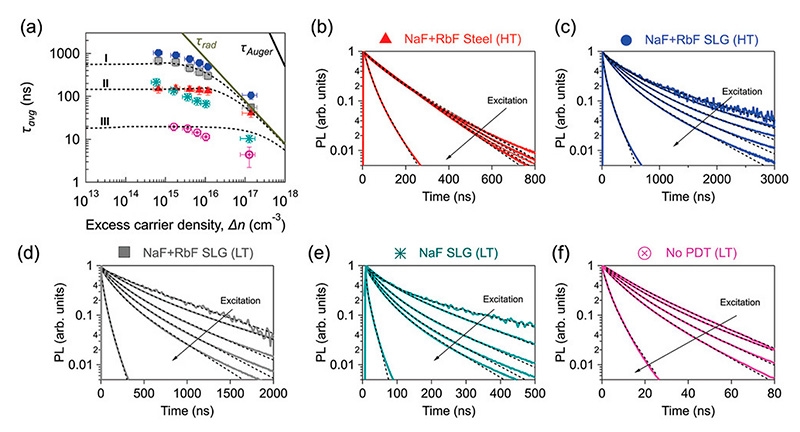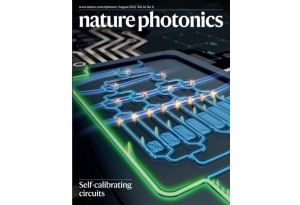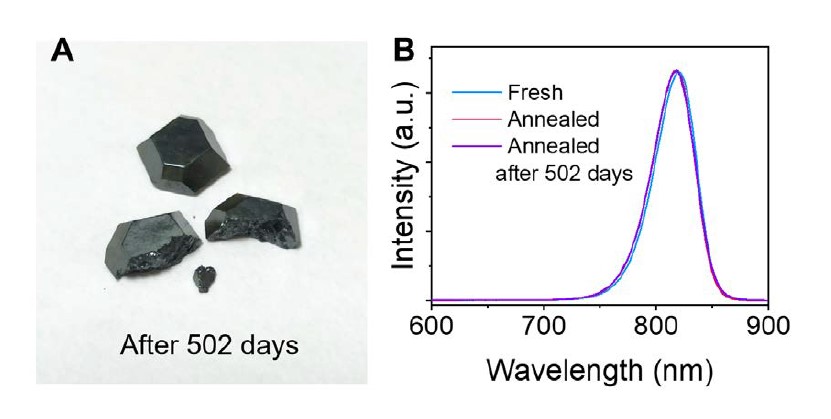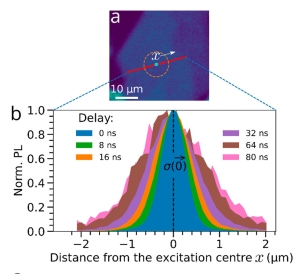Fluorescence Spectrometers
Micro-photoluminescence Upgrade
Multimodal Imaging
- Steady-state and time-resolved spectra from defined regions of interest
- Multidimensional dataset: spectral, temporal, and spatial information
- Various microscope-spectrometer coupling options
- Highly modular and flexible design
- Outstanding spectral and temporal sensitivity
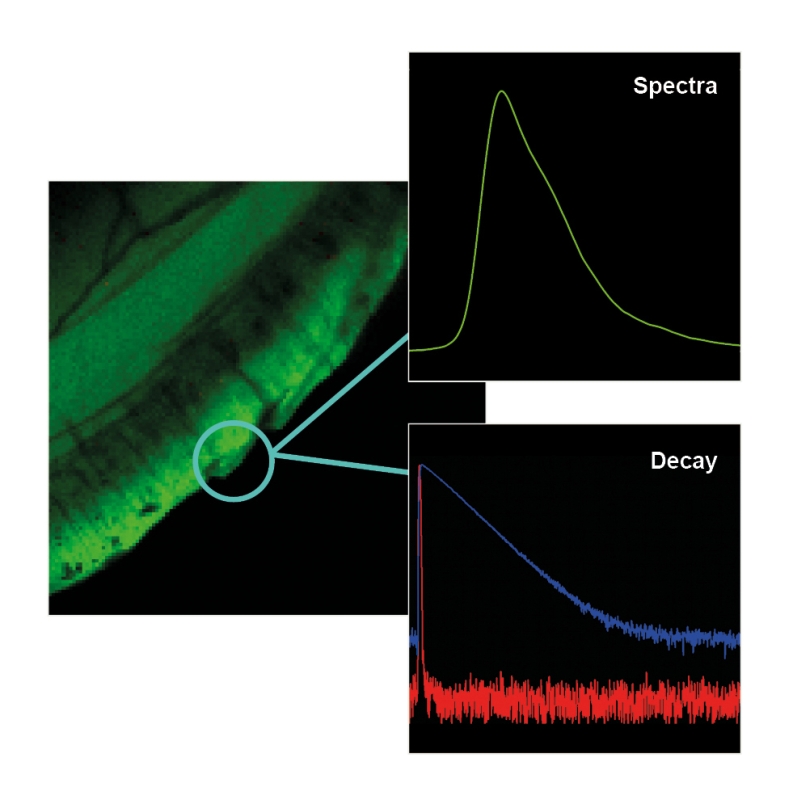 PicoQuant specializes in time-resolved spectrometers and microscopes. Combining expertise from both fields, we offer instruments for time-resolved micro-photoluminescence spectroscopy that integrate spatial, spectral, and lifetime measurements. By coupling microscopes and spectrometers, both high-resolution steady-state and time-resolved emission spectra of specific sample regions or points of interest can be acquired. These multi-dimensional data sets provide valuable new insights that are beneficial to materials science in a variety of fields such as photovoltaics, LEDs, and semiconductors. In particular, the combination of spectral and lifetime measurements of photoluminescence is essential for a comprehensive understanding of the local photophysical and electronic properties of different types of materials or devices.
PicoQuant specializes in time-resolved spectrometers and microscopes. Combining expertise from both fields, we offer instruments for time-resolved micro-photoluminescence spectroscopy that integrate spatial, spectral, and lifetime measurements. By coupling microscopes and spectrometers, both high-resolution steady-state and time-resolved emission spectra of specific sample regions or points of interest can be acquired. These multi-dimensional data sets provide valuable new insights that are beneficial to materials science in a variety of fields such as photovoltaics, LEDs, and semiconductors. In particular, the combination of spectral and lifetime measurements of photoluminescence is essential for a comprehensive understanding of the local photophysical and electronic properties of different types of materials or devices.
Recent publications by researchers using the coupled instruments
Depending on your application and requirements, various microscope (FluoMic, MicroTime 100, MicroTime 200) and spectrometer (FluoTime 300, FluoTime 250) combinations are possible.
| FluoMic + FluoTime |
MicroTime 100 + FluoTime |
MicroTime 200 + FluoTime |
|
|---|---|---|---|
| Microscope body | upright | upright | inverted |
| Observation volume | µm-sized (2 – 100 µm) | confocal | confocal |
| Imaging speed | optional scanning upgrade, depending on piezo scanner, > 30 sec |
depending on piezo scanner, > 30 sec | choice of piezo or FLIMbee galvo scanner, with FLIMbee several fps |
| Software |
EasyTau 2 software for acquisition and analysis (lifetime fit and emission spectra)
SymPhoTime 64 for scanning upgrade
|
SymPhoTime 64 for microscope control and data acquisition
EasyTau 2 for spectrometer control and data acquisition
|
SymPhoTime 64 for microscope control and data acquisition
EasyTau 2 for spectrometer control and data acquisition
|
| Carrier diffusion upgrade | no | yes | yes |
More options:
The confocal microscopes MicroTime 100 and MicroTime 200, that acquire time-resolved images, can also be equipped with either a spectrograph and EMCCD camera to obtain steady-state emission spectra per image pixel, or with a spectrograph and sFLIM detector to measure time-resolved emission spectra per image pixel.
Depending on the research question and type of sample, one technical implementation may be more suitable than others.
Contact us for more information.
Luminescence excitation and emission spectra, on the one hand, are fundamental for analyzing a wide range of materials. On the other hand, microscope images reveal the spatial variation of luminescence properties, e.g., due to structural defects in materials. Moreover, the luminescence lifetime is an intrinsic characteristic of materials, which can be used either for their identification or to sense their local environment. By combining all three types of information from correlated data sets, researchers can draw new conclusions about the properties and behavior of the materials under study.
Solar cells and photovoltaics
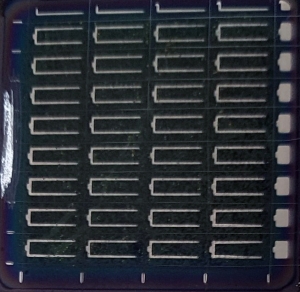 Investigations of solar cells, photovoltaic devices, and semiconductors are essential to enhance their electronic and optical properties as well as the efficiency of their preparation methods.
Investigations of solar cells, photovoltaic devices, and semiconductors are essential to enhance their electronic and optical properties as well as the efficiency of their preparation methods.
- Perovskite solar cells
- CIGS based solar cells
- Cadmium Telluride solar cells
- Quantum well wafers
Learn more:
- Webinar on Microscopic Study of Defects in Metal Halide Perovskites by Prof. Jinsong Huang
- Webinar on Multimodal Microscopy of Halide Perovskite Solar Cells by Prof. Sam Stranks
(Organic) Light Emitting Diodes (LED)
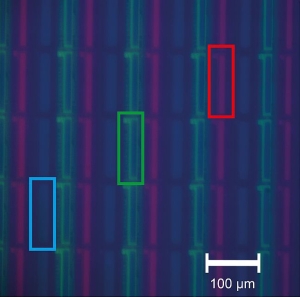 LED materials are essential components in lighting and display technologies, and understanding their properties is crucial for optimizing LED performance. Time-resolved microscopy and spectroscopy are valuable tools for the characterization of new LED materials. From time-resolved data, researchers can elucidate charge carrier dynamics, including carrier trapping, diffusion, and recombination.
LED materials are essential components in lighting and display technologies, and understanding their properties is crucial for optimizing LED performance. Time-resolved microscopy and spectroscopy are valuable tools for the characterization of new LED materials. From time-resolved data, researchers can elucidate charge carrier dynamics, including carrier trapping, diffusion, and recombination.
- Display pixel characterization
- Quantum dot-based LEDs
- Perovskite LEDs
Photocatalysis
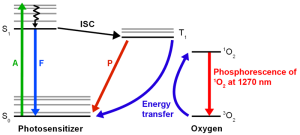 Photocatalysis is a process that utilizes the energy of light to activate a substance, known as a photocatalyst, to drive chemical reactions. Improving the efficiency and selectivity of photocatalysts is essential to maximize their performance in various applications.
Photocatalysis is a process that utilizes the energy of light to activate a substance, known as a photocatalyst, to drive chemical reactions. Improving the efficiency and selectivity of photocatalysts is essential to maximize their performance in various applications.
- Singlet oxygen detection
- CO2 photoreduction
- Photocatalytic H2 generation
- Dye degradation
Nanoparticles and 2D materials
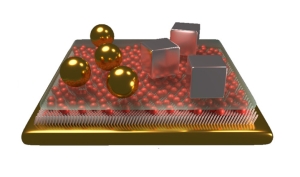 The properties of nanoparticles and 2D materials can be finely tuned by adjusting their size, shape, or composition. This tunability is essential for tailoring them to specific applications. Working with nanomaterials also presents challenges, and the need for specialized characterization techniques, such as TRPL.
The properties of nanoparticles and 2D materials can be finely tuned by adjusting their size, shape, or composition. This tunability is essential for tailoring them to specific applications. Working with nanomaterials also presents challenges, and the need for specialized characterization techniques, such as TRPL.
- Carbon dots
- Perovskite nanostructures
- 2D transition metal disulfides
Upconversion materials
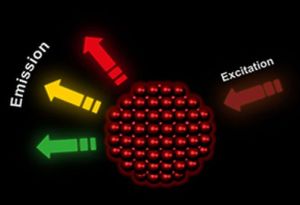 Upconversion materials find applications various fields, for example in photovoltaics for enhanced light harvesting, in bioimaging for in vivo deep tissue imaging, or in security and anti-counterfeiting.
Upconversion materials find applications various fields, for example in photovoltaics for enhanced light harvesting, in bioimaging for in vivo deep tissue imaging, or in security and anti-counterfeiting.
- Rare-earth based
- Triplet-triplet annihilation



 Contact us
Contact us